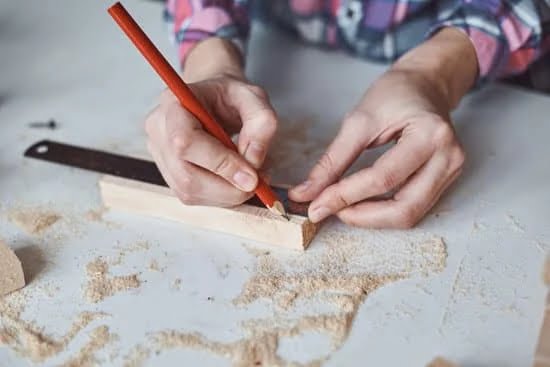Is your woodwork showing signs of wear and tear? Whether it’s scratches, dents, gaps, or even water damage and rot, knowing how to repair woodwork is an essential skill for any homeowner or DIY enthusiast. In this article, we’ll cover everything you need to know about identifying common woodwork issues and providing the necessary repairs. From understanding the type of damage to consulting a professional for more complex projects, we’ve got you covered.
Understanding common woodwork issues is the first step in successfully repairing them. By learning how to identify the type of damage, you can effectively address the problem and prevent it from worsening over time. In this section, we will discuss the various types of damage that can occur on wood surfaces and provide tips for recognizing them. Armed with this knowledge, you’ll be better equipped to tackle any woodwork repair project that comes your way.
Once you’ve identified the type of damage on your woodwork, the next step is gathering the necessary tools and materials for repair. From basic sandpaper and wood filler to more specialized equipment, knowing what you’ll need to get started is crucial for a successful result.
In the following sections, we’ll provide a detailed guide to repairing scratches and dents, filling in gaps and holes in woodwork, addressing water damage and rot, as well as sanding and refinishing old surfaces to bring them back to life. With our step-by-step instructions and expert tips, you’ll be well on your way to restoring your woodwork to its former glory.
Tools and Materials Needed for Woodwork Repair
When it comes to repairing woodwork, having the right tools and materials on hand is crucial for achieving a successful outcome. Whether you’re dealing with scratches, dents, gaps, or water damage, having the proper supplies can make all the difference in restoring your woodwork to its former glory. Here’s a closer look at the essential items you’ll need to get started on your woodwork repair project.
First and foremost, a quality wood filler is a must-have for addressing various types of damage. This versatile product can be used to fill in small dents and scratches, as well as larger gaps and holes in woodwork. Additionally, sandpaper of varying grits will be necessary for smoothing out the repaired areas and preparing the surface for refinishing.
In addition to wood filler and sandpaper, basic hand tools such as putty knives, chisels, and hammers will be needed for making precise repairs to your woodwork. For more intricate projects, investing in a wood carving tool set may also be beneficial.
Finally, when it comes time to refinish your woodwork, you’ll need stain or paint in the desired color, as well as brushes or applicators for an even finish. Understanding which tools and materials are needed for each specific type of repair is essential for achieving professional-looking results when tackling how to repair woodwork projects at home.
Step-by-Step Guide to Repairing Scratches and Dents
Woodwork is prone to scratches and dents, especially in high-traffic areas of the home. Fortunately, these minor damages can be easily repaired with the right tools and techniques. Before you start the repair process, it’s important to understand the type of damage you’re dealing with so that you can choose the appropriate method for fixing it.
Identifying the Type of Damage
When it comes to repairing scratches and dents in woodwork, it’s important to first assess the severity of the damage. Minor scratches can often be disguised with a touch-up marker or a small amount of wood filler, while deeper scratches and dents may require a more involved repair process.
Tools and Materials Needed for Woodwork Repair
To repair minor scratches and dents in woodwork, you will need some basic tools and materials. This includes sandpaper, wood filler, a putty knife, matching stain or paint, and a clear finish. These items can be found at your local hardware store or home improvement center.
Step-by-Step Repair Process
- Start by cleaning the damaged area with a damp cloth to remove any dirt or debris.
- Use fine-grit sandpaper to gently sand over the scratch or dent until it becomes smooth.
- Apply a small amount of wood filler to the damaged area using a putty knife, making sure to fill in any gaps or holes.
- Once the wood filler is dry, sand the area again to ensure a smooth surface.
- Apply matching stain or paint to blend the repaired area with the rest of the woodwork.
- Finish off by applying a clear finish to protect the repaired area and give it a seamless look.
By following these simple steps on how to repair woodwork scratches and dents, you can restore your wood surfaces to their original beauty without having to replace them entirely.
Filling in Gaps and Holes in Woodwork
Woodwork can sustain larger imperfections such as gaps and holes due to various factors including wear and tear, accidents, or aging. These imperfections not only affect the aesthetics of the wood but can also compromise its structural integrity if left unaddressed. Learning how to repair woodwork by filling in these gaps and holes is an essential skill for any DIY enthusiast or homeowner looking to maintain their furniture or home fixtures.
Before starting the repair process, it’s important to gather the necessary tools and materials to ensure a smooth and successful outcome. Some of the items that you’ll need include:
- Wood filler or epoxy
- Sanding block or sandpaper
- Putty knife or spatula
- Paint or stain for finishing
- Protective gear such as gloves and goggles
Once you have everything you need, follow these step-by-step instructions on repairing larger imperfections in woodwork:
- Clean the damaged area: Remove any debris, dust, or loose particles from the gap or hole using a vacuum cleaner or a brush.
- Apply wood filler: Use a putty knife to fill in the imperfection with wood filler, making sure to overfill slightly to account for shrinkage.
- Sand the filled area: Once the filler has dried completely, use a sanding block or sandpaper to smooth out the surface until it’s level with the surrounding wood.
- Finish the repaired area: Apply paint or stain that matches the existing woodwork to seamlessly blend in the repaired section with the rest of the piece.
By following these techniques and being patient with each step, you can effectively fill in gaps and holes in your woodwork, restoring its appearance and functionality. Whether it’s a wooden chair, table, cabinet, or any other piece of furniture, knowing how to repair woodwork will help you preserve your favorite items for years to come.
Dealing With Water Damage and Rot in Woodwork
Identifying the Severity of the Damage
When it comes to water damage and rot in woodwork, it’s important to first assess the severity of the issue. Surface-level water damage may only require superficial repairs, while deeper rot may necessitate more extensive work. Look for signs such as discoloration, soft spots, or a musty odor, which could indicate rot. Identifying the extent of the damage will help determine the best approach to repair.
Replacing Rotted Sections
For woodwork that has suffered extensive rot, it may be necessary to replace entire sections rather than attempting to repair them. This involves carefully removing the damaged area and installing new wood in its place. When replacing rotted sections, be sure to use treated or rot-resistant wood to prevent future issues.
Treating and Repairing Water-Damaged Areas
For less severe water damage, treating and repairing the affected areas is possible. Begin by thoroughly drying out the wood using fans or dehumidifiers. Once dry, sand away any rough or discolored areas and apply a wood hardener to strengthen the damaged wood. After allowing time for the hardener to cure, fill in any remaining gaps with an epoxy filler before sanding and refinishing the surface.
When dealing with water damage and rot in woodwork, it’s essential to address the issue promptly to prevent further deterioration. By understanding the severity of the damage, replacing rotted sections when necessary, and properly treating water-damaged areas, you can effectively repair more serious issues in your woodwork.
Sanding and Refinishing Woodwork
Tools and Materials Needed
To sand and refinish woodwork, you will need the following tools and materials:
- Sandpaper in various grits (coarse, medium, and fine)
- Sanding block or orbital sander
- Wood filler
- Wood stain or paint
- Protective finish (varnish or polyurethane)
- Paintbrushes or foam applicators
- Clean cloths
- Gloves and safety goggles
Step-by-Step Guide to Sanding and Refinishing Woodwork
1. Start by preparing the surface: Remove any hardware such as knobs or handles. Clean the surface thoroughly to remove dirt, dust, and grease.
2. Repair any imperfections: Use wood filler to fill in any gaps, cracks, or holes in the woodwork. Allow it to dry completely before proceeding.
3. Sand the surface: Begin with coarse-grit sandpaper to remove old finish or rough spots. Gradually work your way up to finer grits until the surface is smooth to the touch.
4. Apply stain or paint: Once the surface is smooth, apply wood stain or paint using even strokes in the direction of the grain. Allow it to dry completely before applying a second coat if needed.
5. Add a protective finish: To protect the refinished woodwork, apply a coat of varnish or polyurethane using long strokes in one direction. Allow it to dry thoroughly before applying additional coats as necessary.
By following these steps on how to repair woodwork through sanding and refinishing, you can revitalize old and worn-out surfaces and enjoy their beauty for years to come.
Preventative Maintenance for Woodwork
Woodwork can be a beautiful and timeless addition to any home, but it’s important to take steps to prevent damage and keep it looking its best for years to come. By following some simple preventative maintenance techniques, you can avoid the need for more extensive repairs down the road.
One of the most important things you can do to prevent damage to your woodwork is to keep it clean and well-maintained. Dust and dirt can build up over time and cause scratches or other superficial damage. Regularly dusting and cleaning your woodwork with a mild cleaner can help prevent this type of damage from occurring.
Another key preventive maintenance technique is to keep an eye out for any signs of water damage or rot. Leaks from plumbing or the roof can cause serious damage to woodwork if left unchecked. Be sure to inspect your woodwork regularly for any discoloration, warping, or soft spots that could indicate water damage. If you notice any of these signs, it’s important to address the issue as soon as possible before it leads to more extensive damage.
Properly sealing and finishing your woodwork is also crucial in preventing future damage. Unfinished or poorly finished wood is more susceptible to scratches, stains, and other types of damage. Applying a high-quality finish can help protect your woodwork from everyday wear and tear.
| Preventative Maintenance Technique | Description |
|---|---|
| Regular Cleaning | Dusting and cleaning with a mild cleaner can prevent scratches and superficial damage. |
| Inspecting for Water Damage | Regularly check for signs of water damage such as discoloration, warping, or soft spots. |
| Proper Sealing and Finishing | Apply a high-quality finish to protect wood from wear and tear. |
Consulting a Professional for Complex Woodwork Repairs
In conclusion, knowing how to repair woodwork can not only save you money but also ensure that your furniture and other wooden surfaces last for years to come. From identifying common woodwork issues to understanding the tools and materials needed for repair, this comprehensive guide has provided you with the knowledge and techniques necessary to tackle a wide range of woodwork damage.
Whether it’s scratches and dents, gaps and holes, water damage and rot, or simply refinishing worn-out surfaces, you now have the step-by-step instructions on how to address these issues on your own. However, for more complex woodwork repairs, especially those involving structural damage or intricate woodworking skills, it may be best to consult a professional.
By following the preventative maintenance tips included in this guide, you can also minimize the need for future repairs. With proper care and attention, you can keep your woodwork in top condition and avoid costly fixes down the line. Remember that understanding how to repair woodwork is not only about fixing existing damage but also about maintaining its beauty and functionality for years to come.
Frequently Asked Questions
How Do You Repair a Damaged Wood Finish?
Repairing a damaged wood finish typically involves sanding down the damaged area, applying a wood filler to any deep scratches or gouges, and then reapplying a new layer of stain and finish. It’s important to carefully match the color and type of finish to the existing wood for a seamless repair.
What Is the Best Thing to Repair Wood With?
The best thing to repair wood with depends on the extent of the damage. For minor scratches or dents, wood filler or putty can be used to fill in the imperfections.
For larger repairs such as cracks or splits, epoxy resin or wood glue reinforced with clamps may be more suitable. Ultimately, the best method will depend on the specific type of damage and type of wood.
How Do You Repair Broken Wood Boards?
Repairing broken wood boards often involves first removing any nails or screws holding them in place, then carefully aligning the broken pieces back together. Wood glue can then be applied along the break before clamping the pieces tightly until the glue sets.
In some cases, adding support such as brackets or additional screws may also be necessary for a lasting repair.

Hi everyone! I’m a woodworker and blogger, and this is my woodworking blog. In my blog, I share tips and tricks for woodworkers of all skill levels, as well as project ideas that you can try yourself.





